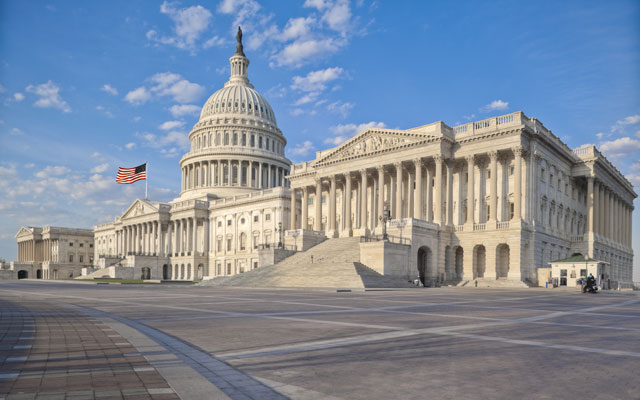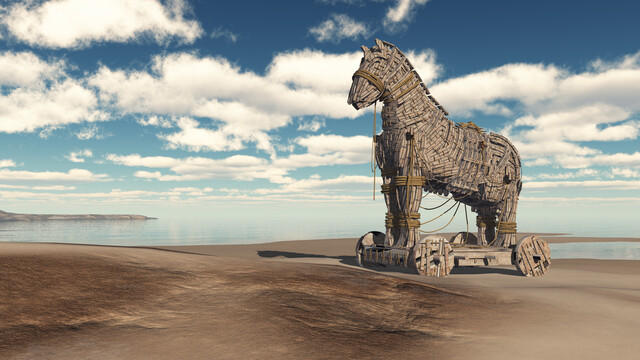Online Class: American History Review

-
15Lessons
-
23Exams &
Assignments -
13Hours
average time -
1.3CEUs
Course Description
American History Review
Dive deep into the mesmerizing tapestry of American history with this comprehensive review course, which delves into the transformative events, influential personalities, and socio-cultural evolutions that have defined and continually shape the United States.
From the harmonious whispers of the indigenous peoples to the fervent calls for independence from colonial rulers, America's narrative is as vast as its landscapes. With a unique story borne out of diversity and unity, challenges and triumphs, the nation has matured from thirteen colonies to a federation of fifty states, further ascending to its eminent position on the global stage. This course aims to not only recount historical facts but also to inspire a profound appreciation for the resilience, innovation, and spirit that embodies the American journey.
Course Highlights:
-
Understand the roots of America's birth and its eventual metamorphosis into a dominant global player.
-
Navigate the nation's dynamic voyage through periods of internal and external conflicts and its pursuit of the cherished ideals of liberty, equality, and happiness.
-
Reflect upon the profound words of the Declaration of Independence from July 4, 1776, a monumental document that underscored the intrinsic rights and aspirations of its citizens.
Detailed Lesson Breakdown:
Lesson 1: Beginnings - 1600 Discover the early settlements, cultures, and societies that thrived on American soil. From indigenous civilizations to the first European explorers, embark on a voyage back in time.
Lesson 2: European Settlements 1600 - 1775 Examine the burgeoning colonies, their dynamics, and the European influence that permeated through socio-economic structures and geopolitical strategies.
Lesson 3: Forming a New Nation 1775-1800 Experience the fervor of the revolutionary era, the fight for freedom, and the foundational moments that birthed a new nation.
Lesson 4: The Establishment of the New Nation Delve into the initial years of the United States: the crafting of the Constitution, early governance, and the challenges of a fledgling democracy.
Lesson 5: The Nation Expands 1801 - 1850 Track the westward expansion, the concept of Manifest Destiny, and the social and economic transformations that came with territorial acquisitions.
Lesson 6: The Nation Divides 1850 - 1865 Confront the heart-wrenching period of the Civil War, understanding its roots, the key battles, and the long-lasting implications on the nation's psyche.
Lesson 7: Developing into a Modern Nation 1860 - 1920 Witness America's industrial revolution, urbanization, and the waves of immigration that added layers of complexity and richness to its national fabric.
Lesson 8: Establishing a World Presence Uncover America's initial forays into global diplomacy, wars, and the establishment of its international stature.
Lesson 9: The Nation in Turmoil 1920 - 1935 Navigate the Roaring Twenties, followed by the despair of the Great Depression, and the measures undertaken for economic recovery.
Lesson 10: Nation at War 1935-1945 Relive the harrowing years of World War II, America's involvement, and its pivotal role in shaping the post-war world order.
Lesson 11: The Aftermath 1945 - 1949 Survey the immediate post-war period, the onset of the Cold War, and America's evolving geopolitical strategies.
Lesson 12: National Identity Issues and Scandals 1950 - 1969 Dive into the era of the Civil Rights Movement, Vietnam War, and the societal upheavals that challenged traditional norms.
Lesson 13: The Rise of the Individual 1970-1993 Explore the cultural renaissance, the empowerment of individuals, and the changing facets of American society.
Lesson 14: A Time of Growing Suspicions and Fears 1994-2009 Understand the post-Cold War era, the challenges of terrorism, and the technological advancements that redefined lifestyles.
Lesson 15: American Lifestyle after WWII to Today Chronicle the modern American experience, the mosaic of cultures, technological innovations, and the nation's visions for the future.
With a blend of engaging assignments, insightful examinations, and an array of resources, this course promises a holistic learning experience. Chart the course of a nation, understand its heartbeats, and appreciate the collective and individual stories that have sewn the American tapestry. Welcome to a journey through time!
- Business
- Business Ethics Courses
- Harassment Prevention Courses
- Human Resources Certifications
- Management
- Aromatherapy Courses
- Caregiver Courses
- Career Development Courses
- Communications Courses
- Confidence and Self Esteem Courses
- Healing
- Human Anatomy Courses
- Medical Skills
- Health & Medicine
- Nutrition
- Marketing
- Microsoft Office Certification Courses
- Life Coaching Courses
- Self-Improvement
- Small Business Certifications
- Safety
- Writing Improvement
- Business Writing Courses
Course Lessons
Lesson 1. America's Origins: A Tapestry of Cultures
 Lesson 1 Video A
Lesson 1 Video A
 Lesson 1 Video B
: Introduction Discussion
Lesson 1 Video B
: Introduction Discussion
 Review Practice Worksheet: Lesson-1-HomeWork-10516.pdf
Review Practice Worksheet: Lesson-1-HomeWork-10516.pdf Lesson discussions: Reasons for Taking this Course
Lesson discussions: Reasons for Taking this Course Complete: Lesson 1 Activity
Complete: Lesson 1 Activity Assessment: Lesson 1 Review Exam
Assessment: Lesson 1 Review Exam
Lesson 2. Seeds of a New Nation: The Birth of American Colonization
 Lesson 2 Video
Lesson 2 Video Review Practice Worksheet: Lesson-2-Downloadable-10517.pdf
Review Practice Worksheet: Lesson-2-Downloadable-10517.pdf Complete: Lesson 2 Activity
Complete: Lesson 2 Activity Assessment: Lesson 2 Review Exam
Assessment: Lesson 2 Review Exam
Lesson 3. Liberty's Birth: America from Colony to Sovereign State
 Lesson 3 Video
Lesson 3 Video Review Practice Worksheet: Lesson-3-WordSearch-10518.pdf
Review Practice Worksheet: Lesson-3-WordSearch-10518.pdf Complete: Lesson 3 Activity
Complete: Lesson 3 Activity Assessment: Lesson 3 Review Exam
Assessment: Lesson 3 Review Exam
Lesson 4. From Articles to Constitution: The Transformation of Early American Governance
 Lesson 4 Video
Lesson 4 Video Review Practice Worksheet: Lesson-4-HomeWork-10519.pdf
Review Practice Worksheet: Lesson-4-HomeWork-10519.pdf Complete: Lesson 4 Activity
Complete: Lesson 4 Activity Assessment: Lesson 4 Review Exam
Assessment: Lesson 4 Review Exam
Lesson 5. The Evolution of America: 1801-1850
 Lesson 5 Video
Lesson 5 Video Review Practice Worksheet: Lesson-5-Downloadable-10520.pdf
Review Practice Worksheet: Lesson-5-Downloadable-10520.pdf Complete: Lesson 5 Activity
Complete: Lesson 5 Activity Assessment: Lesson 5 Review Exam
Assessment: Lesson 5 Review Exam
Lesson 6. Shadowed by Prosperity: How Slavery and Ideology Fractured America
 Lesson 6 Video
Lesson 6 Video Review Practice Worksheet: Lesson-6-Activity-10521.pdf
Review Practice Worksheet: Lesson-6-Activity-10521.pdf Assessment: Lesson 6 Review Exam
Assessment: Lesson 6 Review Exam
Lesson 7. Industrialization and Nation-Building in the U.S. (1860-1920)
 Lesson 7 Video
Lesson 7 Video Review Practice Worksheet: Lesson-7-Activity-10523.pdf
Review Practice Worksheet: Lesson-7-Activity-10523.pdf Assessment: Lesson 7 Review Exam
Assessment: Lesson 7 Review Exam
Lesson 8. Shifting Sands: US Foreign Policy During the Turn of the Century
 Lesson 8 Video
Lesson 8 Video Review Practice Worksheet: Lesson-8-Activity-10525.pdf
Review Practice Worksheet: Lesson-8-Activity-10525.pdf Assessment: Lesson 8 Review Exam
Assessment: Lesson 8 Review Exam
Lesson 9. Jazz, Innovation, and Despair: The 1920s to 1930s
 Lesson 9 Video
Lesson 9 Video Review Practice Worksheet: Lesson-9-WorkSheet-10527.pdf
Review Practice Worksheet: Lesson-9-WorkSheet-10527.pdf Assessment: Lesson 9 Review Exam
Assessment: Lesson 9 Review Exam
Lesson 10. America's Role in World War II
 Lesson 10 Video
Lesson 10 Video Review Practice Worksheet: Lesson-10-Downloadable-10529.pdf
Review Practice Worksheet: Lesson-10-Downloadable-10529.pdf Assessment: Lesson 10 Review Exam
Assessment: Lesson 10 Review Exam
Lesson 11. Postwar Transition: 1945-1949
 Lesson 11 Video
Lesson 11 Video Review Practice Worksheet: Lesson-11-Downloadable-10531.pdf
Review Practice Worksheet: Lesson-11-Downloadable-10531.pdf Assessment: Lesson 11 Review Exam
Assessment: Lesson 11 Review Exam
Lesson 12. Shaping a Nation: American Identity from 1950 to 1969
 Lesson 12 Video
Lesson 12 Video Review Practice Worksheet: Lesson-12-WorkSheet-10533.pdf
Review Practice Worksheet: Lesson-12-WorkSheet-10533.pdf Assessment: Lesson 12 Review Exam
Assessment: Lesson 12 Review Exam
Lesson 13. From Disillusionment to Empowerment: The Rise of Individualism in America, 1970-1993
 Lesson 13 Video
Lesson 13 Video Review Practice Worksheet: Lesson-13-WorkSheet-10535.pdf
Review Practice Worksheet: Lesson-13-WorkSheet-10535.pdf Complete: Lesson 13 Activity
Complete: Lesson 13 Activity Assessment: Lesson 13 Review Exam
Assessment: Lesson 13 Review Exam
Lesson 14. Era of Suspicion: Navigating a Nation's Turmoil and Transformation (1994-2009)
 Lesson 14 Video
Lesson 14 Video Review Practice Worksheet: Lesson-14-WordSearch-10537.pdf
Review Practice Worksheet: Lesson-14-WordSearch-10537.pdf Assessment: Lesson 14 Review Exam
Assessment: Lesson 14 Review Exam
Lesson 15. War to Baby Boom: Shaping America's Social Fabric in the 40s and 50s
 Lesson 15 Video
Lesson 15 Video Review Practice Worksheet: Lesson-15-Downloadable-10539.pdf
Review Practice Worksheet: Lesson-15-Downloadable-10539.pdf Lesson discussions: End of Course Poll; Course Comments
Lesson discussions: End of Course Poll; Course Comments Complete: Lesson 15 Activity
Complete: Lesson 15 Activity Assessment: The Final Exam
Assessment: The Final Exam Assessment: Lesson 15 Review Exam
Assessment: Lesson 15 Review Exam
Learning Outcomes
- Analyze the impact of European exploration on the socio-economic structures of Native American societies in pre-colonial America, utilizing specific historical examples
- Demonstrate an understanding of the diverse cultural exchanges and conflicts between indigenous tribes and European settlers during the early history of North America
- Describe how Native American knowledge contributed to the survival and success of early European settlements in North America.
- Identify the diverse motivations of European settlers who migrated to the New World from 1600 to 1775.
- Identify and analyze the principles expressed in the Declaration of Independence and the U.S. Constitution, and explain their significance in global democratic movements.
- Recognize the key events and Acts leading to the American Revolution and describe their impact on colonial resistance efforts.
- Explain the significance of the Northwest Ordinance in the territorial expansion of the United States and its attempt to limit slavery.
- Recognize the weaknesses of the Articles of Confederation and how they led to the drafting of the U.S. Constitution.
- Define how the Alien and Sedition Acts contradicted the First Amendment's free speech protections.
- Describe the impact of Jefferson's Louisiana Purchase on American territorial expansion.
- Describe the impact of key events, such as the Emancipation Proclamation and the Battle of Gettysburg, on the Civil War's outcome and its legacy.
- Recognize the economic, social, and political differences between the North and South leading to the American Civil War.
- Define the impact of the Civil War on the rapid industrialization and economic expansion of the United States between 1860 and 1920.
- Demonstrate mastery of lesson content at levels of 70% or higher.
Additional Course Information

- Document Your Lifelong Learning Achievements
- Earn an Official Certificate Documenting Course Hours and CEUs
- Verify Your Certificate with a Unique Serial Number Online
- View and Share Your Certificate Online or Download/Print as PDF
- Display Your Certificate on Your Resume and Promote Your Achievements Using Social Media

Student Testimonials
- "Thank you very much for sharing all of your knowledge and feedback. It was wonderful taking this course. I loved the sequencing of this course. I have learned so much that will help me in the future both personally and professionally. Thank you!" -- Denise C.
- "I was extremely inspired by instructor he was very knowledgeable and helpful. I really enjoyed his help and his advice. Outstanding." -- Wanda W.









